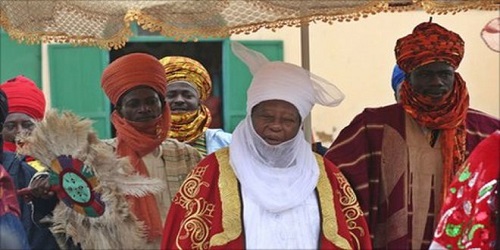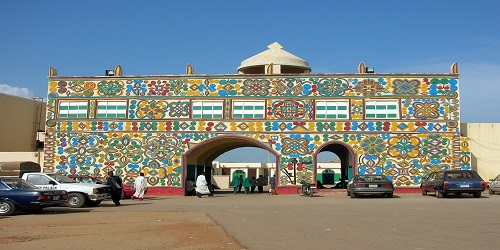
ZAZZAU, also known as the Zaria Emirate /Zegzeg is a historic kingdom, traditional emirate, and local government council in Kaduna State, northern Nigeria, with its headquarters at Zaria city.The most important source for the early history of Zazau is a chronicle composed in the early 20th century from oral tradition. It tells the traditional story of the foundation of the Hausa kingdoms by Bayajidda, a culture hero and gives a list of rulers, along with the length of their reigns.
According to this chronology, the original Hausa or Habe kingdom is said to date from the 11th century, founded by King Gunguma. Zazzau’s most famous early ruler was Queen (or princess) Amina (may be that is why ‘Amina’ is a popular name among the Hausa), who ruled either in the mid-15th or mid-16th centuries, and was held by Muhammed Bello, an early 19th century Hausa historian and the 2nd Sultan of Sokoto, to have been the first to establish a kingdom among the Hausa.
Zazzau was a collection point for slaves to be delivered to the northern markets of Kano and Katsina, where they were exchanged for salt with traders who carried them north of the Sahara. According to the history in the chronicle, Islam was introduced to the kingdom around 1456, but appears to have spread slowly, and pagan rituals continued until the Fulani conquest of 1808. At several times in its history, Zazzau was subject to neighboring states such as Songhai, Bornu and Kwararafa.

In 1804 the Muslim Hausa ruler of Zaria pledged allegiance to Usman dan Fodio, the Fulani Muslim leader who was conducting the great jihād (“holy war”) in northern Nigeria. This resulted in a Fulani becoming ruler of Zaria in 1808. The Hausa ruler had escaped to Abuja, where he established a state now known as the Suleja Emirate, retaining his independence and the title of “Sarkin Zazzau”. The ruler of the modern Zazzau Emirate also uses the title “Sarkin Zazzau” or “Sarkin Zaria“. After the jihad, the culturally similar but pastoral or nomadic Fulani intermarried with the more settled Habe farmers, and the people of the Emirate today are generally known as Hausa-Fulani. The government of the Zaria Emirate differed from other emirates created at this time in that offices were rarely hereditary, but were appointed based on merit or obligation. Zaria’s fortunes declined in the late 19th century.
This Palace is situated inside the ancient city of Zazzau. It was built of mud also with traditional expertise typical of Hausa architectural design. The Palace is surrounded with high walls with beautifully constructed gates. One of the gates is the main entrance gate while the other gate separates the residential area of the Emir and his family from his emirate offices. The Palace, with such beautiful Habe Traditional Architectural Design, projects a sheer grandeur of beauty and elegance of the traditional Hausa culture of the Zazzagawa. The palace is simply fascinating and irresistible to witness.
Emergency Number: 112
Banks in Kaduna
Brief History of Kaduna
Business and Economy
Festivals and Carnivals
General and Teaching Hospitals
Hotels and Guest Houses
Kaduna State Ministries Agencies and Parastatals
Police Stations
Popular Markets
Prominent Towns
Restaurants, Bars, Night Clubs
Shopping Malls
Tourist Attractions
Traditional Games
Banks in Kaduna
Brief History of Kaduna
Business and Economy
Festivals and Carnivals
General and Teaching Hospitals
Hotels and Guest Houses
Kaduna State Ministries Agencies and Parastatals
Police Stations
Popular Markets
Prominent Towns
Restaurants, Bars, Night Clubs
Shopping Malls
Tourist Attractions
Traditional Games




